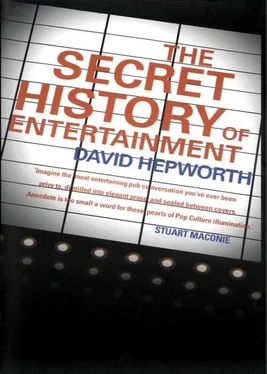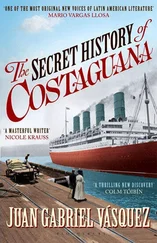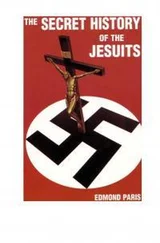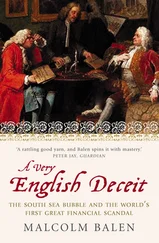The accident that befell guitarist Willie Kizar’s amplifier on the road to Memphis can be considered the father of every subsequent attempt to electronically manipulate sound in the name of excitement.
THE MAN WHO DIED ON A TV CHAT SHOW
Jerome Rodale was a pioneer of the health and fitness movement of the late 1960s. His publishing company, Rodale Press, launched the very successful magazine Men’s Health. On 5 June 1971 Rodale, who had predicted he was going to live to be a hundred (‘unless I’m run down by a sugar-crazed taxi driver’), was recording an appearance on The Dick Cavett Show when his chin dropped to his chest and he appeared to be asleep. ‘Are we boring you, Mr Rodale?’ Cavett enquired with unseemly levity. It transpired that Rodale had died of a heart attack. The show was never broadcast but the incident later inspired an unforgettable Alan Partridge show in which the eighty-four-year-old Lord Morgan of Glossop expires on the Partridge couch.
THE MAN WHO WAS MEANT TO BE BOND
Sean Connery established the physical type for James Bond with his appearance in the first Bond film, Dr No, in 1962. But Bond’s creator Ian Fleming had someone rather different in mind when he first unveiled his character in the 1953 book Casino Royale. In the original description of the agent, Vesper Lynd, first in a long line of Bond girls, describes him as ‘very good looking’ and says ‘he reminds me rather of Hoagy Carmichael…there is something cold and ruthless about him’. At the time, Carmichael’s career as a composer of such cosy classics as ‘Stardust’ and ‘Georgia On My Mind’ was winding down. He was sixty when the first Bond film was made. He did make a few film appearances, as in To Have And Have Not , but remained more comfortable straddling the 88s than wielding the Walther PPK. ‘There are other things in life besides music,’ he once remarked. ‘I forget what they are but they’re around.’
THE MYSTERY OF ‘WHAT’S THE FREQUENCY, KENNETH?’
One evening in 1986, Dan Rather, one of the best-known figures in American network news, was assaulted while walking down Manhattan’s Park Avenue by two well-dressed men he had never seen before. One man punched Rather and kicked him in the back while loudly demanding, ‘Kenneth, what’s the frequency?’ The victim took refuge in a nearby office building and the men ran off. Rather’s account of this puzzling incident was widely disbelieved, given his flair for self-dramatisation (he once took to signing off bulletins with the word ‘courage’), and his alleged assailant’s question was adopted in some quarters as slang to denote cluelessness. In 1997 it was concluded that the man who had set upon him was a disturbed individual named William Tager, by then serving a prison sentence for the murder of an NBC stagehand. At the time, this unfortunate individual was under the impression that the media were beaming messages to him and presumably thought such a prominent member of the media as Rather would know the actual frequency. The incident – or possibly Game Theory’s 1987 song ‘Kenneth, What’s The Frequency?’ – inspired REM’s song of almost the same name on their 1994 album Monster. Dan Rather, who is as averse to personal publicity as most news anchors, subsequently appeared with the group on backing vocals when they undertook a Saturday Night Live appearance.
ALEC GUINNESS’S STAR WARS PENSION
Throughout his career the venerable actor Sir Alec Guinness remained obsessed with the fear of losing his new-found prosperity and tumbling back to his very humble origins. (He was born Alec Cuff, the product of a brief liaison between a barmaid and an unidentified toff. ‘My mother’s a whore,’ Guinness once said. ‘She slept with the entire crew on Lord Moyne’s yacht at the Cowes Regatta.’) Even when firmly established as one of the greatest cinema actors of his generation and constantly in demand for work, guests at his Sussex home were horrified at how parsimonious Guinness could be in everyday matters like food and central heating.
In 1975 Guinness had a meeting with an unknown director called George Lucas who wanted him to play Obi-Wan Kenobi in a film he was planning called Star Wars. The initial offer made to him was a fee of $150,000 plus two per cent of the producer’s profit. This was the kind of generosity they needed to show to get a respectable name like Guinness to put on the marquee. The favourable critical reaction to the film’s release cheered him considerably, though he had no inkling of what a monster he had helped spawn: ‘This could bring me in $100,000 if it does Jaws business as predicted.’
Unprompted and encouraged by the early box-office returns, George Lucas then asked him to take another quarter per cent, and Guinness’s diaries record his satisfaction at this ‘temporary fortune’. ‘The bank telephoned to say they’d received £308,552,’ he wrote on 1 February 1978. More money followed, but the publicity attending the movie’s success attracted the Inland Revenue, who subsequently made life hard for Guinness. For the rest of his life he was indignant about claims made in the press about his Star Wars earnings. Even though he found the films irritating and the experience of making them dull, he signed up to do cameos in the next two movies and cheques kept appearing throughout the early 1980s. In November 1983 he greeted one for $250,000 with rare delight: ‘That will pay for our daughter’s schooling, our Italian holiday and our prefilming holiday in India.’ His co-star Harrison Ford, who was one of the few members of the Star Wars cast with whom he struck up a rapport, used to refer to him as ‘The Mother Superior’ behind his back.
KENNETH WILLIAMS’S LAVATORY
A walking parody of fastidiousness, the late Carry On actor and radio performer was neurotically suspicious of human society and utterly obsessed with hygiene. He lived alone in a flat in the West End of London where he kept clingfilm over his cooker to ward off germs. He never invited his friends round for dinner because, he said, ‘I can’t stand the idea of another bottom on my loo.’ On the rare occasions that people did drop in on him unexpectedly they were asked to use the facilities at the hotel across the road from his flat.
DAVID BOWIE’S EYES ARE DIFFERENT COLOURS
When the young David Jones of Bromley was thirteen he was involved in a fight over a girl with a school friend called George Underwood. This resulted in his taking a blow to his left eye from a fist (and not a pair of compasses or a toy airplane propellor as some more lurid accounts have it), which caused him to be hospitalised for over four months. At first he was in danger of losing his sight altogether, but ultimately he was left with a permanently enlarged pupil in his left eye. This still shows predominantly hazel, in contrast with the natural blue of his right eye. (The rim around the iris is still blue in certain photographs, although the issue may be clouded by Bowie’s occasional use of contact lenses.) Bowie and Underwood, who subsequently played in bands together, have remained close friends since the incident.
If you’ve ever sat in a cinema and felt the speakers shaken by a voice like a gravel and honey cocktail intoning a script which generally begins with the words ‘In a world…’, then you have probably heard the work of Don LaFontaine, Hollywood’s foremost voiceover artist for the last forty years. Starting as a sound editor, LaFontaine lucked into his multimillion dollar profession one day back in the 1960s, when the actor supposed to voice Gunfighters of Casa Grande didn’t show up for the date and Don was called upon to speak the line ‘In a blur of speed their hands flashed down to their holsters and came up spitting fire’. Since then LaFontaine has done more than 4,000 trailers and is known as the ‘Voice of God’, a role he has actually performed live from behind a curtain at his local church. LaFontaine still works as often as he feels like today, ferried from date to date in a white stretch limousine. A decent job will make him $2,000 and may take as long as half an hour. However, like most voiceover artists, he has the latest state-of-the-art ISDN technology installed in his home and can work without leaving the house.
Читать дальше












